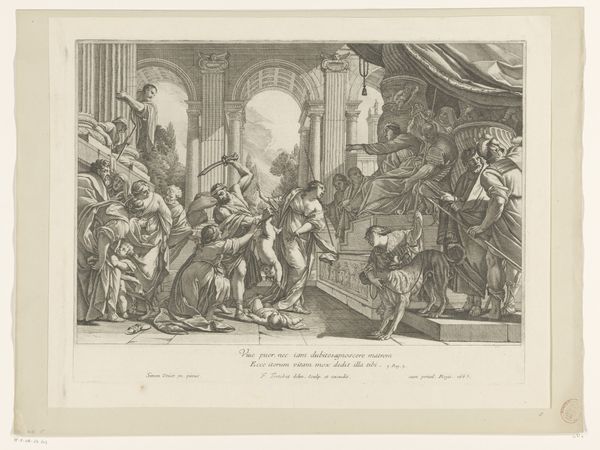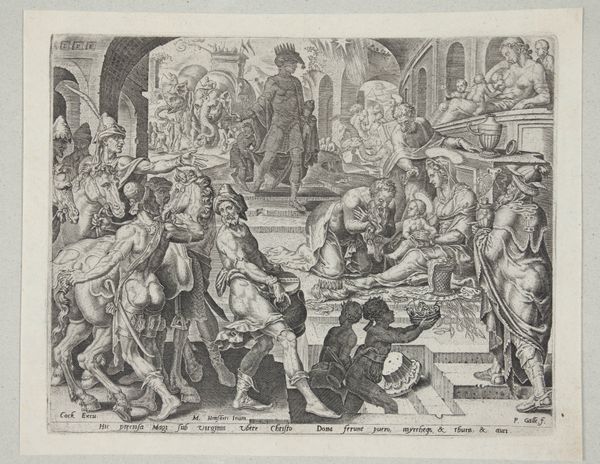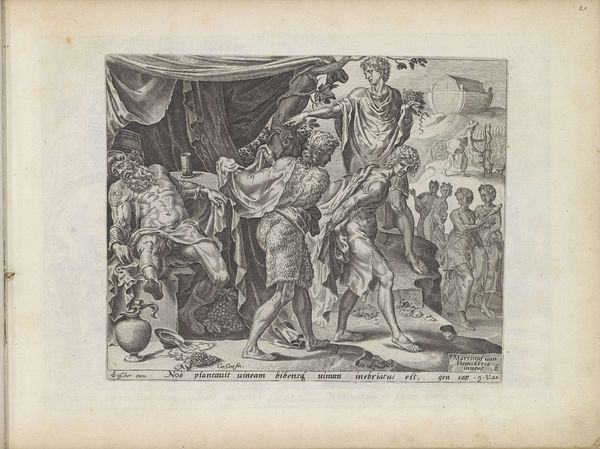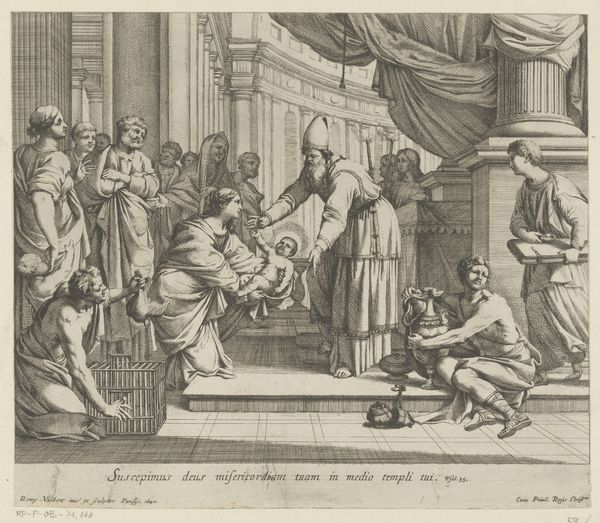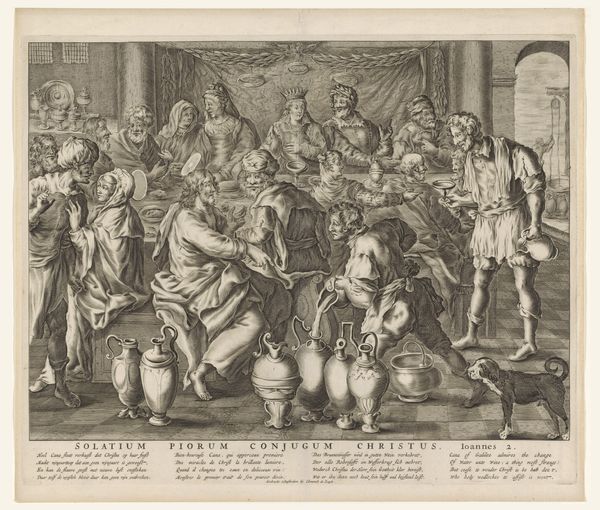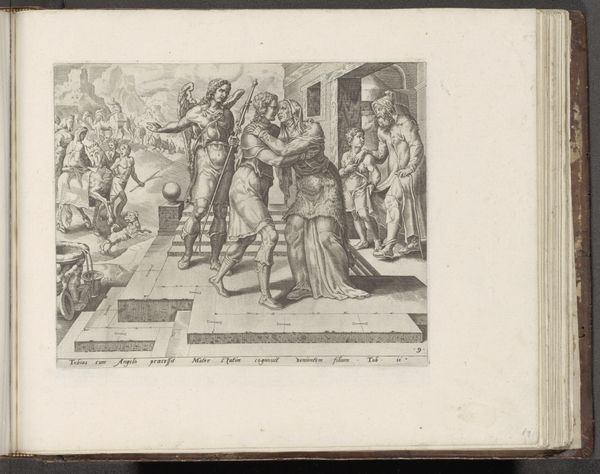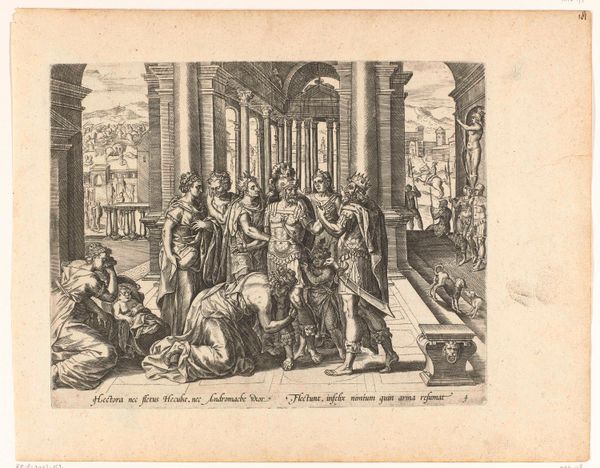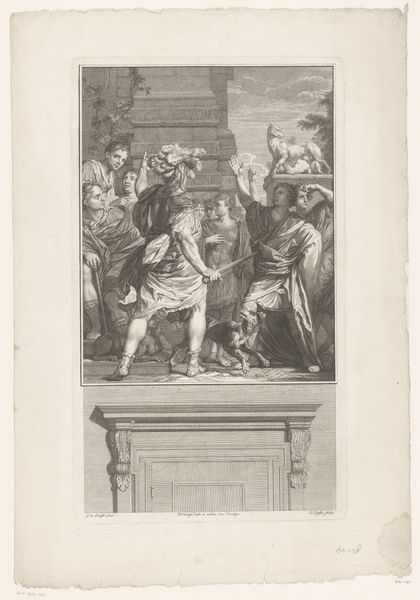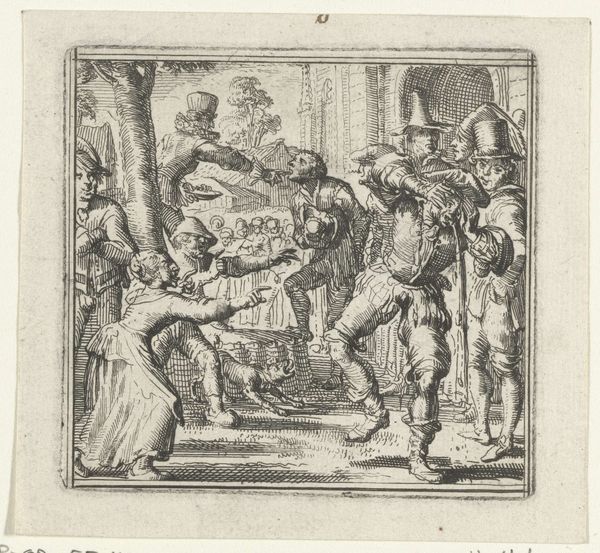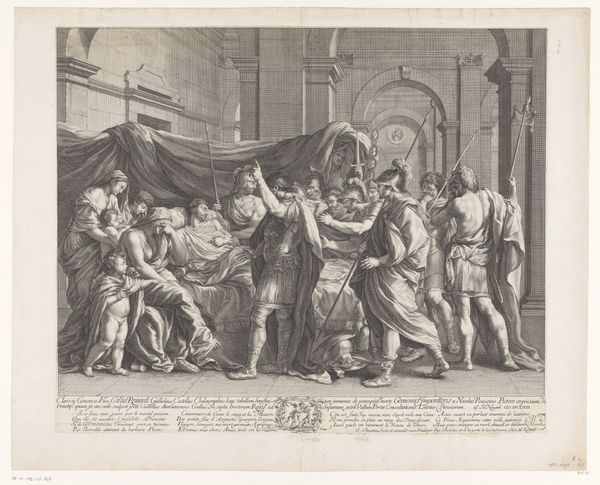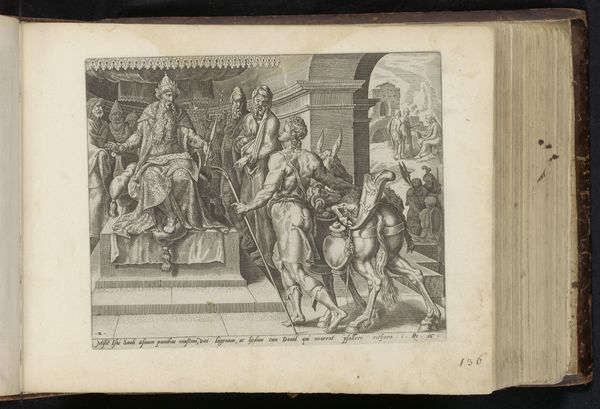
The Langobard Queen Gondiberga Founds the Church of Giovanni Domnarum 1635
0:00
0:00
print, etching
#
narrative-art
#
baroque
# print
#
etching
#
figuration
#
history-painting
#
italian-renaissance
#
italy
Dimensions: 9 11/16 × 13 1/2 in. (24.61 × 34.29 cm) (plate)13 5/8 × 18 5/8 in. (34.61 × 47.31 cm) (sheet)
Copyright: Public Domain
Curator: Welcome. Here we have an etching by Carlo Andrea Sacchi, dating back to 1635, entitled "The Langobard Queen Gondiberga Founds the Church of Giovanni Domnarum". It's currently housed at the Minneapolis Institute of Art. Editor: My first impression is a certain unease. Despite the celebratory subject matter, the density of figures and the stark contrasts create a somewhat frenetic, almost claustrophobic feel. Curator: Interesting. Let's consider how Sacchi organizes this composition. Note the strong verticality established by the classical columns, dividing the scene. On the left, we see a throng of figures, and to the right, the implied space of the church being founded. There is an immediate sense of depth and layering to the space, established through line weight and relative object sizes. Editor: For me, that throng hints at a deep well of underlying societal dynamics at play. There is almost too much humanity crammed in, and the almost savage character with heavy stones across his back draws the eye with potent visual symbolism about sacrifice and atonement. What were the cultural currents surrounding Gondiberga's story that Sacchi taps into here? Curator: It appears Sacchi is making use of mannerist affectation and stylistic influence through his choice of etching style. His technique shows cross-hatching for shading but is a somewhat crude printing. The line weight variation emphasizes key figures. There is, as you say, a density achieved through these repetitive parallel and perpendicular marks that make it initially somewhat difficult to decipher. Editor: Yes, consider the figure of Gondiberga herself. In what ways does she serve as an archetype? What message might Sacchi be conveying through her? We need to ask: How did they want to remember her? What sort of political and religious landscape helped create the stories that are retold in this image? She certainly symbolizes not only the church’s foundation but also ideas surrounding innocence or purity… Perhaps redemption after accusation or hardship? Curator: The strategic use of perspective focuses the eye, but notice the figures themselves are all on similar, even planes of attention. Also note how this is not merely an image of founding; Sacchi also includes other acts of purported atonement. A powerful blend of artful geometry and visual narrative, all etched into a single plane. Editor: Ultimately, it prompts us to question the stories we tell ourselves about power, virtue, and history and about faith. An important topic given this print's setting in its own era. Curator: Agreed. It provides the perfect excuse to dive a bit deeper into the historical and theoretical narratives underlying Sacchi's work.
Comments
minneapolisinstituteofart almost 2 years ago
⋮
This etching illustrates a scene from the 600s in Lombardy, today in northern Italy. Queen Gondiberga had been falsely accused of conspiring to poison her husband, the king, who then imprisoned her in a tower for three years. Only when an emissary of another king entreated her husband to put the matter to the “judgement of God” did the king relent, and then only by allowing Gondiberga to choose a champion to fight a duel on her behalf against her accuser. The fight resulted in the accuser’s death and a declaration of Gondiberga’s innocence. She was restored to her palace and all her honors. In celebration, she founded San Giovanni Domnarum, endowing it with vast farmlands and precious ecclesiastical furnishings. Gondiberga appears at the upper left of the frenetic composition. A priest holds documents, perhaps her orders. In the left foreground sits a powerfully built soldier, presumably the champion who fought on her behalf. In the right foreground, a muscular young man steps forward, baring the precious furnishings, two elaborate candlesticks slung over his right shoulder, an aspersorium (holy water container) and perhaps an oil lamp dangling on chains from his left hand. Further to the right, in the background, we see the church’s patron saint, John the Baptist, and his sheep. San Giovanni Domnarum means “St. John of the women,” an appropriate title since the church was used as a baptistry for women.
Join the conversation
Join millions of artists and users on Artera today and experience the ultimate creative platform.
